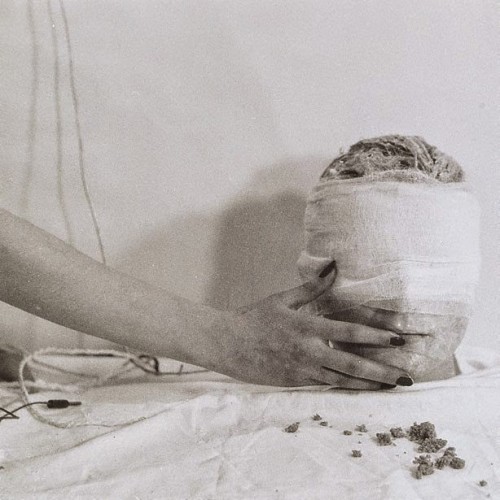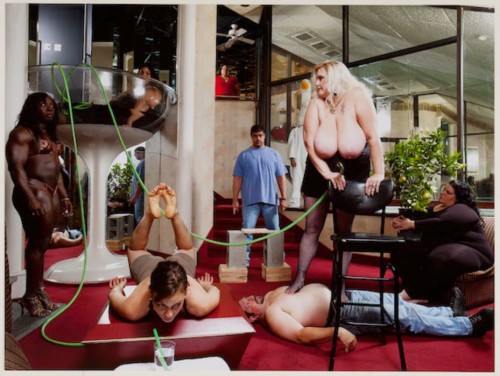Grounding Future Queer
November 20, 2014 – January 6, 2015
Today marks the last day to visit “Grounding Future Queer,” a comprehensive and sophisticated show curated by ADHT professor Anthony Whitfield on view in the Sheila C. Johnson Design Center. The exhibit features the work of prominent lesbian, gay, bisexual, queer, and trans artists to explore the themes of queer identity and experience, and to push back against dominant cultural norms. Each work is accompanied by a text written by a student or faculty member at the New School that presents a unique reading of that work, re-imagining its meaning within society and advancing the discourse surrounding current LGBTQ+ issues. Together, these texts form http://groundingfuturequeer.blogspot.com, a blog that provides a forum for students to discuss and analyze the works featured, highlighting the sense of community that the show seeks to create. The eclectic mix of media and themes makes the 72+ piece show compelling throughout, and represents the idiosyncrasies of individual queer experience that contests what Whitfield calls the “tide driving LGBT people into normalcy.”
The exhibit examines a wide range of issues related to gender and sexuality. Collier Schorr’s sculpture “Underneath My Shoe,” for example, comments on normative gender roles and expectations. The work is a plaster cast of a frilly child’s dress, hung from the ceiling to reveal vulgar words and phrases written in pencil on the garment’s underside. A symbol of stereotypical femininity, the piece demonstrates how children are socialized to subscribe to the gender roles that create a narrow notion of femininity. The juxtaposition of the cast’s interior and exterior demonstrates the hidden inner conflicts that come with gender expectations, highlighting the often experienced emotional disconnect between internal and external identities.

Rudolf Schwarzkogler. “Aktion 4 Sommer 1965 – Aktion Wein Portfolio.” 1965-1966.
Isaac Julien’s “Untitled (Mazatlan),” offers viewers a representation of the complexities and ambiguities that can underpin the queer experience. The photograph depicts an underwear-clad man in his bedroom, holding a gun in his hand. Another man is shown in the bedroom window, although his identity and relationship to the subject remains unclear. The lack of context gives rise to a multiplicity of interpretations: the image may be denoting self-harm, voyeurism, pr desire. Such ambiguity drives the viewer to confront any assumptions made about the image and its depiction of gay lifestyles.
One of the show’s strongest pieces is “Aktion 4, Sommer 1965,” a photo series by Rudolf Schwarzkogler. The photographs depict a passive male subject who is bound and covered in various material. In some images, his body is tied up with ropes and fabric. In others, his disembodied head lies on a table, cloaked in cloth, netting, and gauze. The work is at once disturbing and emotionally compelling, making a powerful statement about the ways in which personal identity can be masked, molded, and repressed by societal standards and expectations. The individual no longer has control over how he expresses and represents himself. Taken in 1965, the piece nonetheless remains relevant today, exemplifying how “Grounding Future Queer” as a whole draws from the past to foreground present day issues and to envision a sexually diverse and inclusive future.
–Ana Miljak





























